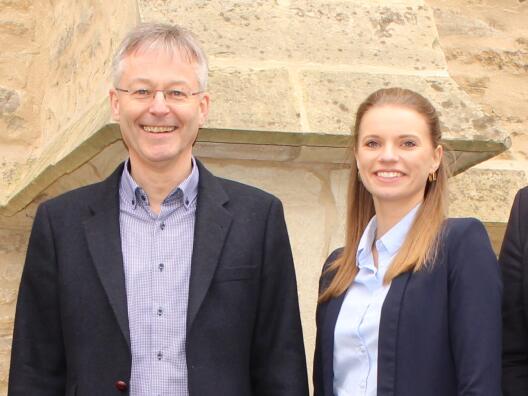Digital religion? Theory and practice of inventorying the Christian cultural heritage
Interview with Prof. Dr. Norbert Köster and Carolin Hemsing from the Faculty of Catholic Theology on the possibility of using digitization to preserve the cultural heritage

Many parish churches are home to important artefacts that researchers have difficulty accessing because they are not published at all or are published in remote locations with qualitatively inadequate images. In addition, the closure of parish churches means that they disappear into depots or are sold on the art market. Digitization is intended to preserve this cultural heritage in the long term. The first part of the workshop report in November 2023 explained the complex requirements of digitizing works of art according to scientific standards and making them available for open access, while the second part explored what it means when Christian art moves from the church to the database.
What is the subject of your DH project, and what question does it use DH methods to answer?
Based at the Office of Christian Pictorial Imagery, Theological Aesthetics and Didactics of Imagery (ACHRIBI), the project “Digitizing the Christian cultural heritage in the diocese of Münster” is concerned with cataloguing and digitally recording artefacts in the approximately 700 churches and chapels in the diocese of Münster, and with disseminating them digitally as Christian artefacts. To this end, we are working closely with the art conservation group in the diocese’s vicariate general. The project is working on the following research questions in three sub-projects:
1. What artefacts are in the churches and chapels of the diocese of Münster?
2. How can these be made available digitally and in open access for the purposes of research?
3. How can the Christian cultural heritage be disseminated digitally?
What do the DH methods actually look like when you apply them in your project?
The first methodological challenge is to reappraise the existing inventory database, which entails retro-digitizing extant index cards, photographs and negatives. These must be sorted out and entered into a digital asset management system that can process large volumes of data. Ensuring that the data can be used long-term in a user-friendly manner requires a data management plan, data cleaning, mapping for the central database, and modelling of the data according to the diocese’s specifications.
The second step involves the process of re-cataloguing. Managing this five-year process requires project software with an order allocation system and digital roadmap.
If the re-cataloguing on site leads to new data, then these must first be compared with the existing inventory database, making it necessary then to reprocess and standardize the new data of the artefacts for transfer to the central database. Documentary photographs must also be added to the data.
Finally, the data are exported to the Foto Marburg image archive (XML format) and published in other databases in open access.
How are or were these methods developed?
In this form and according to these digital standards – there is no comparable project in German dioceses. Up to now, catalogues were usually kept for internal purposes only. Developed as part of the project, the data field catalogue used for the inventory meets digital standards for linking with meta and standard data, making the (public) re-use of the data possible for the first time.
In order to benefit from the experience of other such projects, our project is being advised by Christian Bracht (Foto Marburg image archive) and his team as part of Task Area 2 of NFDI4Culture. Staff from the Service Centre for Digital Humanities at the University of Münster Library are part of the project team for curating the new as well as the inventory database.
What results are already available and what results do you expect? What would the same research look like without DH methods?
As the new inventory will not begin until November 2023, the focus at the moment is on digitizing the inventory database.
By 2029, around 150,000 data will be entered into the HIDA project software, from which 700 digital inventory databases will be created. The data will be made accessible to researchers via the Foto Marburg image archive. An exhibition curator will also curate digital exhibitions and disseminate them on DDB-Studio and elsewhere.
The same research without DH methods would mean individual index cards being created by hand for each artefact, copies of which then being compiled into an analogue inventory that is made available to the municipalities. These inventories would not be accessible to the public, or perhaps only on request. As the municipalities themselves are usually unable to curate exhibitions of their artefacts, there would be little educational work involved. This has long been the status quo since cataloguing began in the diocese of Münster in the 1970s.
What is the social relevance of this research today? What value do the DH methods have in this regard?
Christian artefacts in churches and chapels are not only subject to great change due to secularization; they are also at risk of theft. Furthermore, they are not available to the public or for research purposes. About a third of churches keep no catalogue of artefacts, which is why it is often unknown which “treasures” research may still uncover. As part of our data collection, the cultural heritage will be (1) digitally preserved, (2) made available for research purposes, and (3) prepared didactically for the public in virtual exhibition formats.

